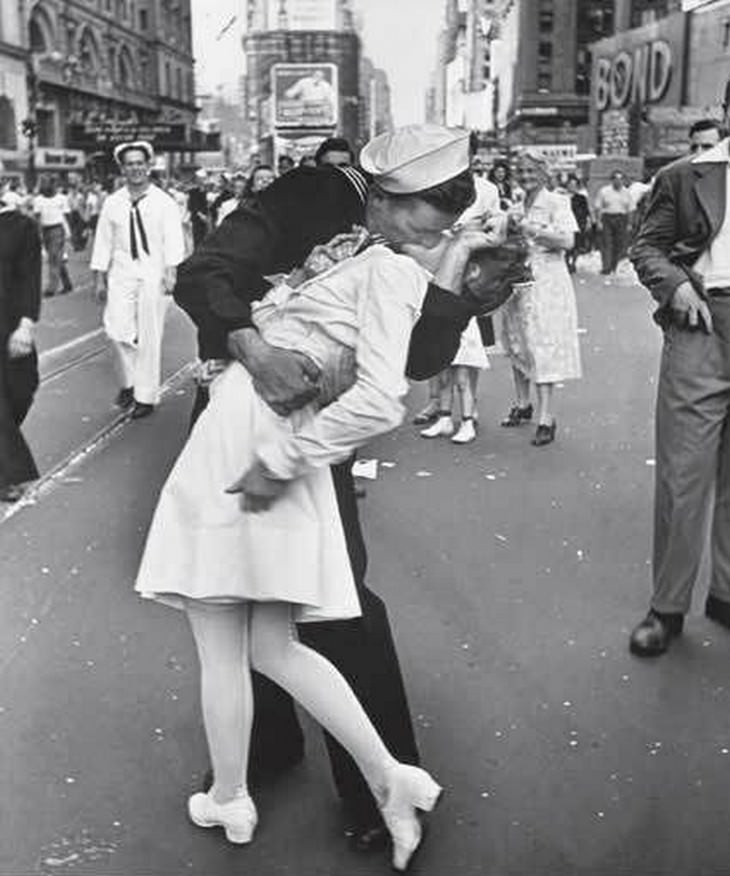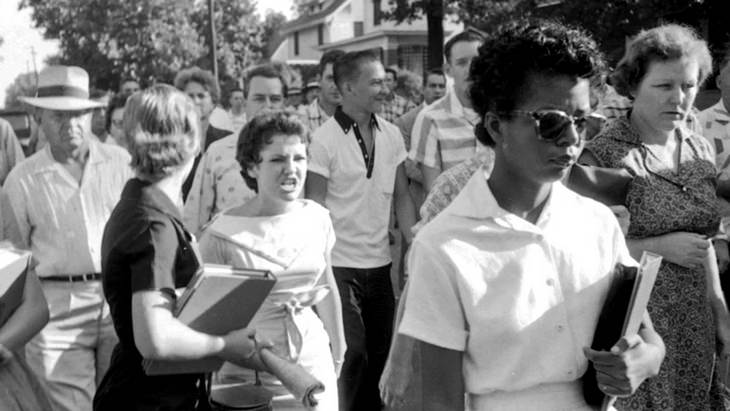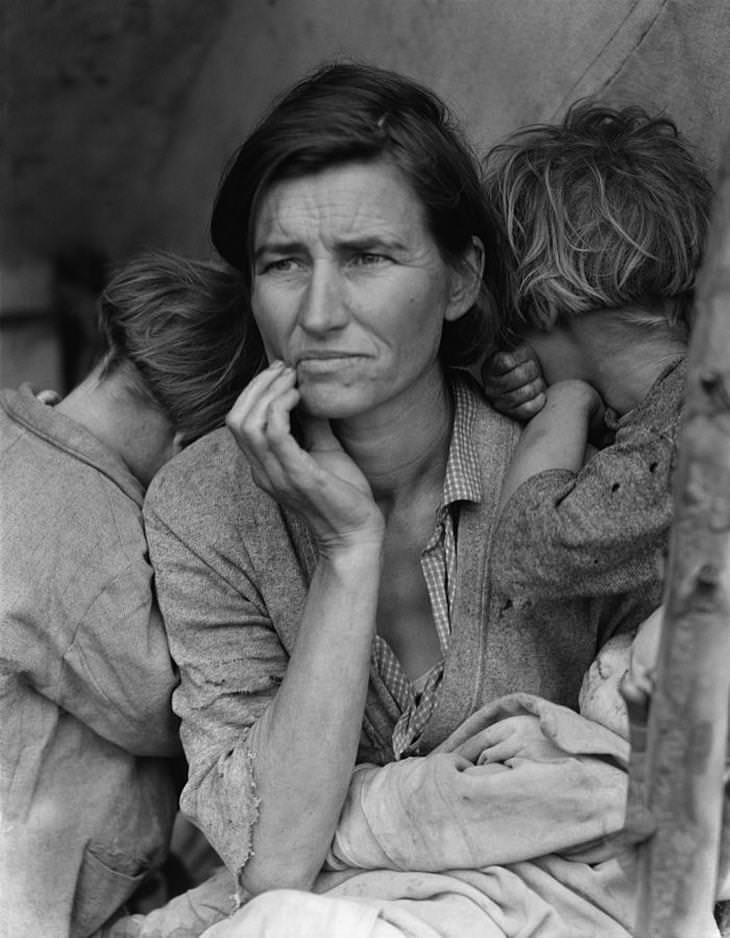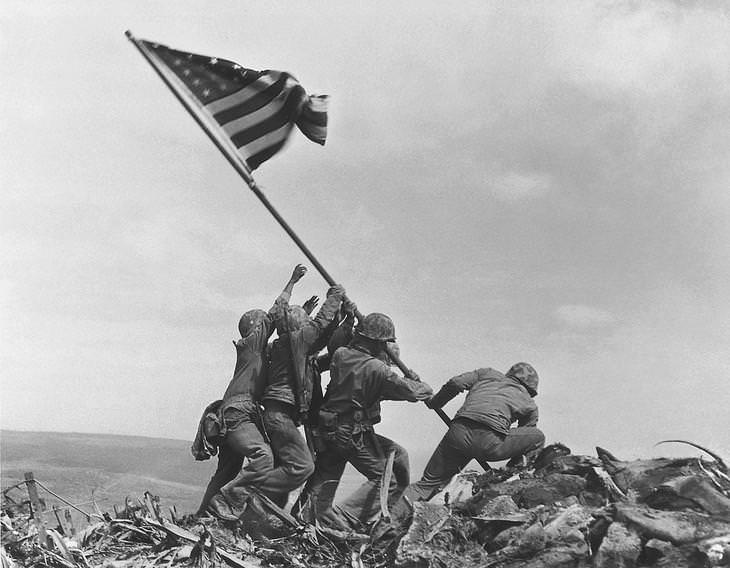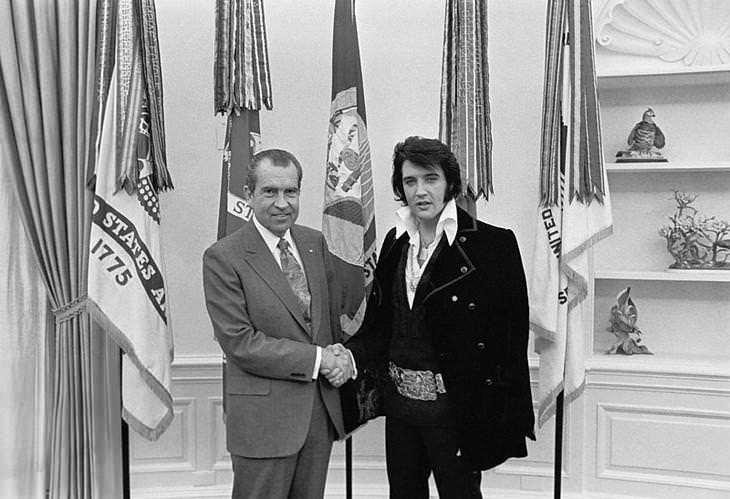This is probably one of the most famous historical photographs in existence. It was captured by the famed photographer Alfred Eisenstaedt, on August 14, 1945 - the day when Japan’s surrender to the Allies was announced, and World War II officially ended. The snap of a sailor kissing a white-clad woman amid the celebrating crowds in Times Square became the symbol of the ecstatic excitement people felt when the war ended. The photographer didn’t manage to ask the subjects for their names as everything happened so fast and the scene was incredibly lively. “There were thousands of people milling around… everybody was kissing each other”, Eisenstaedt explained.
Over the years, several men and women came forward, claiming they are the ones depicted in the now-iconic image. A 2012 book identified them as George Mendonsa, a sailor on leave at the time, and Greta Friedman, a dental assistant wearing a nurse's uniform. The truth is Mendonsa and Friedman were actually perfect strangers!
The sailor, who was overjoyed with the news, expressed his excitement through a completely spontaneous kiss; “You come back from the Pacific and finally, the war ends. The excitement of the war being over, plus I had a few drinks. So when I saw the nurse, I grabbed her and I kissed her” he told CBS news.
Not only that, but he was also on a date with another woman at the time, Rita Petrie, who can be seen in the background of the photo. But she didn’t seem to mind. In fact, she later became Mendonsa’s wife for 7 whole decades. Both subjects of the photograph recently passed away - Friedman in 2016, and Mendonsa in 2019.
2. Elizabeth Eckford Harassed by Hazel Bryan, 1957, Little Rock, Arkansas
The photograph of Elizabeth making her way to school while a white mob is trailing behind her and hurling insults has become one of the most famous images of the civil rights era. Turns out Eckford and the girl behind her, Hazel Bryan whose face is contorted mid-shout share a complicated history beyond this immortalized moment.
In 1957, Eckford was one of the first nine African-American students to enroll in the all-white central high school of Little Rock, Arkansas - a group that would later be known as the Little Rock Nine. It did not go smoothly, as the infamous photo reveals. There was a whole mob trying to prevent Elizabeth from entering the school, but Hazel was the one caught most vividly on camera.
Benjamin Fine of The New York Times later described her, she was “screaming, just hysterical, just like one of these Elvis Presley hysterical deals, where these kids are fainting with hysteria”. After the photo made headlines, Hazel’s parents decided to pull her out of Central and send her to a different school. Over the years, as she learned more about African-American history, Hazel started feeling remorseful and ashamed at the way she behaved that day. In 1963 she tracked down Elizabeth and called her to apologize. Elizabeth briefly accepted the apology, and the two did not speak again for years.
The year 1997 marked the 40-year anniversary of the Little Rock Central High School integration. Then-president Bill Clinton, who is also an Arkansas native, held a big ceremony noting the event. Will Counts, the photographer responsible for the photo, asked Eckford and Bryan if they would be willing to pose again for a second photograph and they both agreed. Reconciled after 40 years, the two women discovered they had much in common and struck an unlikely friendship. They started attending events and touring schools together, giving talks about race and tolerance. They both received much criticism for their relationship - Elizabeth for being too naive and forgiving, and Hazel for not being sincere.
Eventually, the friendship was strained for many reasons. Elizabeth believed Hazel did not own up to her past as well as she should have and began suspecting she was indeed just trying to clear her name. Unfortunately, the two could not mend those tensions and gradually broke off contact. Their picture of reconciliation is still sold as a poster in the visitor’s center near Little Rock Central High School.
3. Albert Einstein Sticking His Tongue Out, 1951, New Jersey
This photograph, which grew to be one of the most famous ones of Albert Einstein, was taken on March 14, 1951, while the Nobel-prize winning physicist was leaving an event held in honor of his 72nd birthday in Princeton, New Jersey. A few reporters followed Einstein on his way out, trying to get a good picture. Artur Sasse, the man behind the famous shot, waited till most of them dispersed, then walked right up to the car waiting for the scientist and his crew and said “Ya, Professor, smile for your birthday picture, Ya?”. Instead of smiling, Einstein stuck out his tongue. He didn’t think Sasse would be quick enough to capture the moment.
Einstein already had a reputation for being a bit bizarre, and the playful image further established his public view as a charming nutty professor. Einstein himself liked the image so much that he requested UPI to send him 9 copies for personal use, one of which he signed for a reporter. In 2009 the original signed copy was sold at auction for $74,324.
4. Migrant Mother, 1936, California
Dorothea Lange's Migrant Mother is a classic American photograph and a symbol of the Great Depression. There are few images as deeply ingrained in the national consciousness as this one, and yet for decades, no one knew the subject's identity nor her fate. In 1978, a reporter managed to track her down in a trailer park in Modesto, California. She was 75 years old at the time. On the day the photograph was taken she preferred not to reveal her name to ‘spare her children the embarrassment’ as she said. But when finally discovered years later, she agreed to tell her story.
Her name is Florence Owens Thompson. In 1931, when she was 28 years old and pregnant with her 6th child, her husband died of tuberculosis. Thereafter, Thompson worked odd jobs to keep her children fed. For most of the 1930s, the family lived a nomadic life, while Thompson supported them as a farmhand, picking whatever was in season. One day in 1936, while driving from Los Angeles to Watsonville, Thompson's car broke down. She managed to get the car towed to the Nipomo pea picker's camp and have it repaired. The family was just about to leave when Dorothea Lange showed up.
At first, Thompson was reluctant to have her picture taken, and her poverty displayed for everyone to see. However, Lange convinced her the photograph would educate people about the plight of hardworking, but poor people like herself. The photograph made waves and was extremely talked about from the moment of its publication. Despite its high profile, Thompson never made any monetary gain from her picture. She passed away in 1983, at the age of 80.
5. Raising the Flag on Iwo Jima, 1945, Mt. Sigurachi
On February 23, Associated Press photographer Joe Rosenthal documented five Marines and one Navy corpsman raising a US flag over Mt. Suribachi, the highest point on the Japanese island of Iwo Jima. After four days of brutal fighting, the American forces managed to seize the fortified island. To mark their victory, they planted a small flag on the top of the mountain. Later that same day, they were ordered to replace the flag with a much larger one, that would be seen even by troops in ships offshore. The iconic photo actually shows the second flag to be raised in Iwo Jima.
Subsequently, the photographer was accused of staging the dramatic set-up. He denied the allegations and was supported by eye-witnesses. His shot went on to become a powerful patriotic symbol, and the only photograph to win the Pulitzer Prize in the same year it was taken. Three of the Marines in the picture were later killed in action in Iwo Jima (the battle didn’t officially end until March 26, 1945). The three surviving flag raisers were sent back to the US, where they were welcomed as heroes.
6. Richard Nixon and Elvis Presley, 1970, White House
The secret meeting of music legend Elvis Presley and the 37th president Richard Nixon is one of the stranger stories on the list. On December 21, 1970, Presley showed up at the White House gates unannounced, and dropped off a handwritten letter of introduction to the president, stating that he wanted to be of service to the country. “I have done an in-depth study of drug abuse and Communist brainwashing techniques and I am right in the middle of the whole thing where I can and will do the most good, I would love to meet you just to say hello if you’re not too busy,” read Elvis’s letter.
The musician believed young people considered him one of their own, thus making him the perfect person to fight the war against illegal drugs. He was a collector of police badges, and his main goal was to obtain a badge from the Bureau of Narcotics and Dangerous Drugs and to be named a “Federal Agent at Large.” After the letter was delivered to a Nixon aide, Presley was ushered into the White House to meet the president that same afternoon.
There is no official transcript of the meeting and everything that is known about it came from reports of the aide, who was present in the room. Presley did receive an “honorary badge”, which he believed to be the real thing. The photograph, taken by the White House photographer Ollie Atkins is the most requested one in the entire US national archives.

